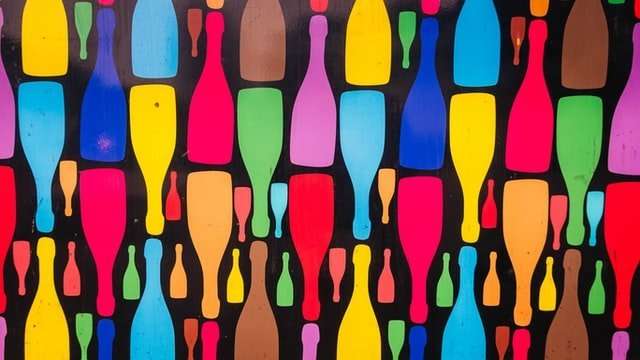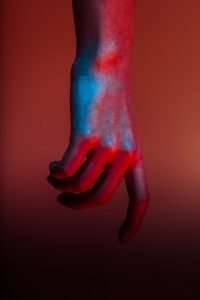Top Ten Tools For Getting that Perfect Artwork:
1. Get the Right Tools
2. Different Strokes for Different Folks
3. Embrace the Digital Age
4. Time is of the Essence
5. Practice Makes Perfect
6. Don’t be Afraid to Experiment
7. Take a Class or Find a Friend to Draw with You
8. Start Drawing People and Faces Early On
9. Make Your Own Reference Photos and Sketches
10. Make it Personal and Fun
Top Ten Tools For Getting that Perfect Artwork:
1. A sketchbook – for any type of art you are creating it is imperative that you carry a sketchbook around with you at all times. You never know when an idea will pop in your head and you don’t want to forget it.
TIP: Get one with a spiral binding so the pages lie flat and you can use both sides of the paper.
2. Traditional or digital drawing tablet – I highly recommend going digital because the ability to eraser is extremely helpful. The only downside is that some tablets are really expensive but they do last a long time. My advice is to get a cheaper one to start out with, but still something that has good durability because they can be pretty fragile if dropped or stepped on (believe me I have had my fair share of broken tablets).
3. Tablet stylus – While some people like using their finger while drawing, I prefer using a stylus because it’s easier and more accurate. Some people say that their finger is just as accurate and quick, but I disagree because my fingers are too big and fat to move that quickly without messing up sometimes. Also, some artists found that their finger left smudges on the screen so this can be
1. Perspective Drawing
Perspective drawing is a very powerful tool in your creative arsenal. You can use perspective to guide the viewer’s eye through your artwork or to distort the way they see it. Many artists use perspective as a way of creating depth within their artwork, while others use it to create a sense of unease by making the thing look distorted. Either way, it is an essential skill to have under your belt.
2. Gesture Drawing
Gesture drawing is one of the most important drawing techniques you can learn. It helps you capture action or movement quickly so that you can transfer it onto paper when you have more time for detail work. It is also useful for working on a large piece when you need to get an idea down fast before moving on to another section of your artwork.
3. Sharpie Pencils
If you want precise control over your lines and you want them to be incredibly sharp and clear, then Sharpie pens are the best option for you. These markers are opaque and come in many different colors so they will work well with any type of art project that you have in mind.
4. Charcoal Pencils
Charcoal pencils allow you to have a great deal of control over the thickness of
”’www.art-tutorials.org/how-to-draw/”’
There are many different ways to create artwork and each technique can create a piece of art with a unique look and feel. The drawing techniques below are a great place for beginners to experience the basic techniques used in drawing and there is no reason why you cannot use them to create professional level artwork.
Tutorials
Drawing is not just about the end result, it’s about the artistic process too. The tutorials below will show you how to get started on your own drawings using simple techniques that anyone can do. These tutorials are suitable for beginners and will help you develop your artistic skills.
The tutorials below will give you some ideas on how to draw different subjects, including objects, people and animals.
The tutorials below will give you some tips on how to draw different textures like skin, hair, fur and other materials like wood or stone.
As well as drawing objects and textures, it is also fun to learn how to draw faces and people in different poses. The tutorials below will show you how to achieve this goal by showing you some basic facial expressions which you may want to try out in your own drawings later.
The tutorials below show you how to make
If you are looking to improve your drawing skills, there are a few things you should consider. One of them is the type of paper that you draw on. Cheap sketch paper is not going to be able to work with your needs. You will need to use the right kind of paper so that your art can be seen in the best way possible.
Trying to find some drawing paper can be difficult if you have never tried it before. Here are some tips to help you get started:
Art tools are the devices used by artists to achieve the desired art effects. Artistic tools are found in nature, but most of the tools used today by artists have been developed over the years due to changes in materials, technology and artists’ needs.
For centuries, artists have created their own artistic supplies as needed. Nowadays, however, you can find many different types of art supply companies that sell these items premanufactured. The following is a list of ten of these art tools that you will want to consider for purchase.
* 1. Use the right tools for the job. One of the most important things to know is what media is best suited to your needs and abilities you have, as well as how much time you can dedicate to the project. Some things are better left to professionals, just because it will take too much of your time to learn how to use them properly or make anything worthwhile with them.
To some extent, playing it safe with new mediums can be a good idea if you want to get started in art, and it is important that you set your goals in advance before deciding on a medium. If you want to get into traditional watercolors, don’t try digital art first. And likewise, if you want to do digital art, don’t start out with oil paints.*


